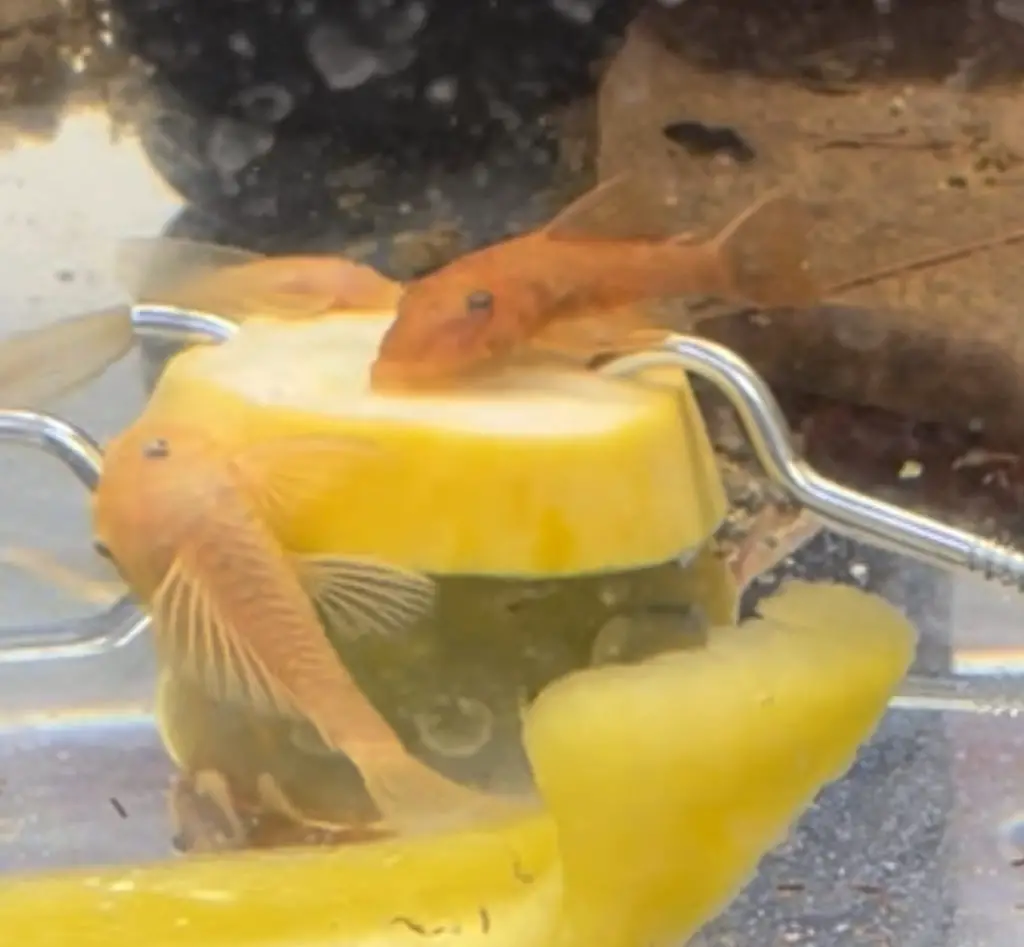Nothing is more impressive than walking into a room and seeing a large fish tank with some massive fish.
It catches everyone’s eye. The problem is often large fish are predators and if it fits in their mouth it’s food.
This makes finding tankmates extremely hard. Potential tank mates are either too small or have personality traits that make them incompatible with these large fish.
Predator fish mainly use the top portion of the tank. This leaves a large portion of your tank unused.
Which if you are like me irritates you to no end. I love packing my tank to the max. Probably a habit I developed from having to overcrowd my tanks when I had Malawi cichlids.
When trying to fill the bottom portion of the tank you run into some issues. First is that most bottom dwellers are quite small and easily swallowed by large fish.
Next is that many fish are easily bullied and/or stressed by predator fish. Or they are incredibly boring or downright ugly.
In my opinion, the best fish to add to your tank and to separate it from other large tanks is a large Pleco.
Now when I say Pleco that doesn’t mean a large common Pleco. These are ugly and everyone has one but with over 350+ plecos and new ones being discovered regularly, it gives you tons of options.
These 5 plecos come to mind when planning a large tank with monster fish.
Mango Pleco

The first is Mango Pleco also known as L-47
It is a nice bulky Pleco that has a beautiful emerald green body and a yellow seam on its tail.
This Pleco of often sold fairly small but when it grows out it is a big fish that your predator fish will have a hard time swallowing or bullying.
L191 Royal Pleco
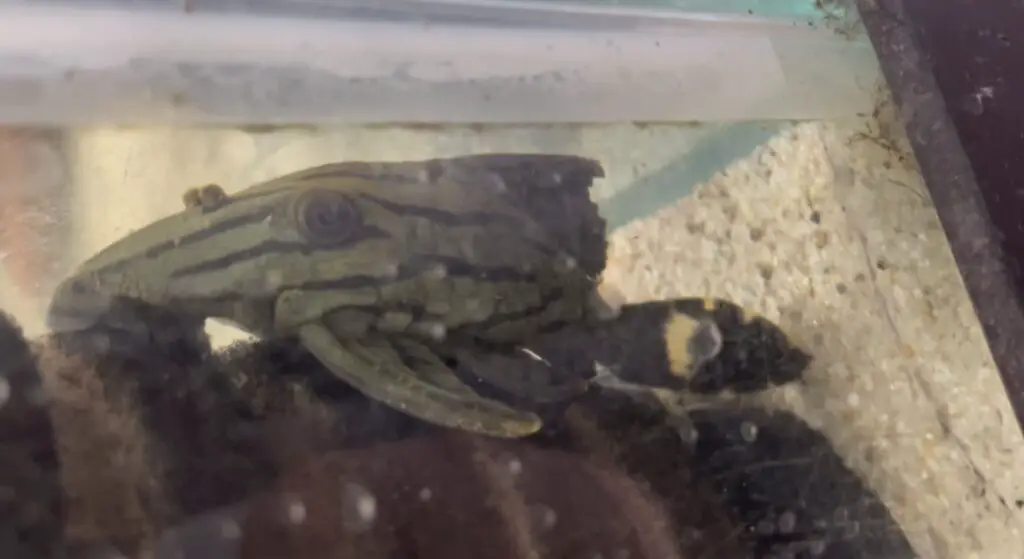
The royal Pleco is probably the most well-known large Pleco after the common pleco. It has a green base with black designs on it.
These lines can run the length of the body or create little green dots when they run into each other.
This Pleco can get over a foot in length and is also known for how wide they get. They get 4-6 inches wide and can get a similar height as well.
They look like green mammoths wandering through the tank.
This fish loves to chew on wood so they would do great in an aquascape that has a lot of driftwood. While you can find these in a small size I wouldn’t suggest buying them at a young age for a predator tank.
They are extremely slow growers and can take 10 years before they get to a size where they can protect themselves from large fish.
Blue Eye Panaque
The blue eye panaque is a stunning fish. The contrast between the gray body and the blue eyes is beautiful.
Being in the same family as the royal Pleco it enjoys wood and has a very similar body shape. While many people don’t like the gray body, I love it.
It reminds me of a large tank making its way to its destination. It is also a fairly rare fish and not many people have them.
L600 Leopard Cactus Pleco
The leopard cactus Pleco looks just like it is named. It has spines on its body that line up just as cactus do. It also has little spots just like a leopard does.
Another cool thing is as it gets older its nose slowly gets rounder so it starts to look like a submarine swimming in your tank.
Hypostomus Luteus
Having a luteus in your tank will definitely set it apart. It is one of the rarest, if not the rarest pleco in the hobby. There is only one gentleman in the US who imports them. This fish will run you from about $300-$5000 depending on the size and phase of the fish.
The Luteus is such a unique fish in the Pleco world. It has 3 phases. Some believe that these phases are dependent on the age or health of the fish and others believe that each phase is more like a color morph.
Phase 3
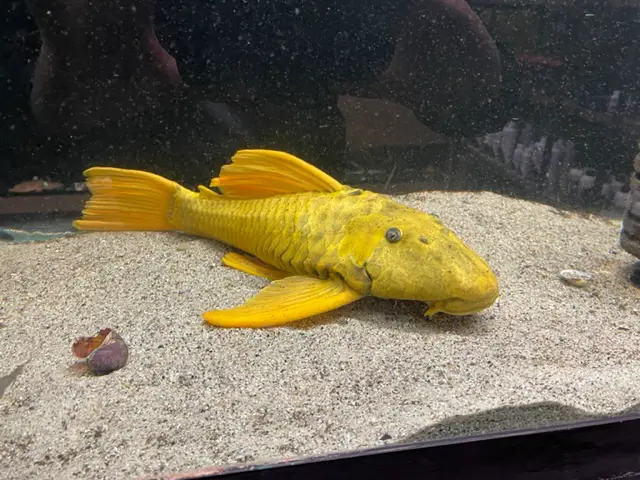
The most sought after phase is phase 3. It is completely yellow all over its body. It is an amazing fish to see in person.
Of the luteus I’ve seen, the last phase 3 I saw was the largest I’ve seen and there are very few fish that could mess with it even if they wanted to.
Phase 2
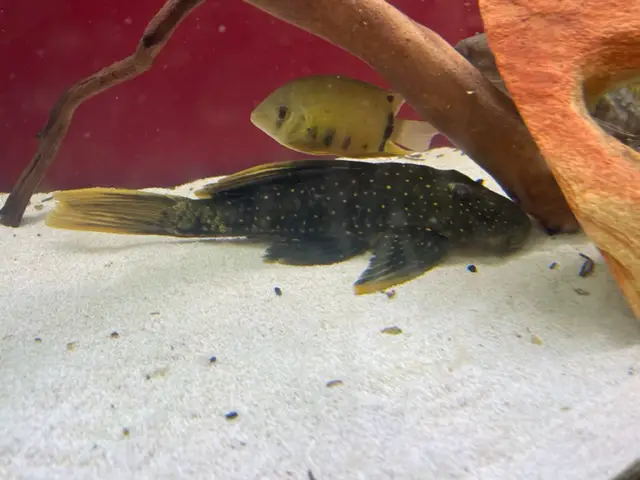
The next is phase 2. It has a black base with little white dots all over its body. The dorsal, pectoral, and tail fins have yellow on them.
This is my favorite phase just because of the color contrast between the black, yellow, and white spots. Also that not many fish have spots and color on them.
Phase 1
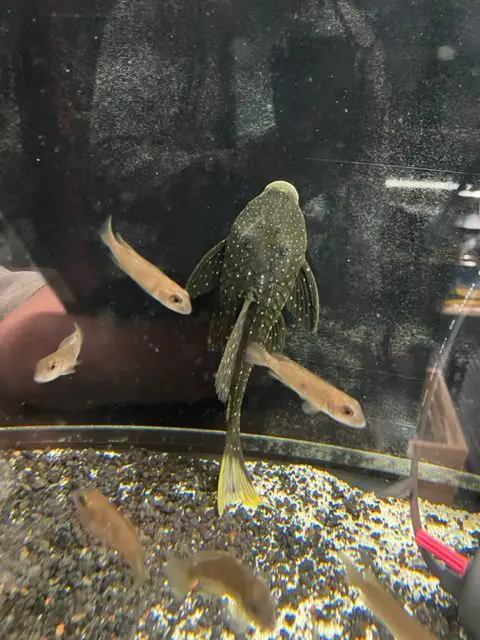
Lastly is phase 1. This one while not a bad looking fish but compared to phases 1 and 2 it is a lot less attractive. It has a black base with little white dots all over it.
While these are some of my favorites there are many other great plecos could fit the bill as companions for your beautiful monsters. The pleco species continues to surprise me with the variations that it has.
Related Articles
Can my plecos eat leafy vegetables?
How do you take care of pleco eggs?
